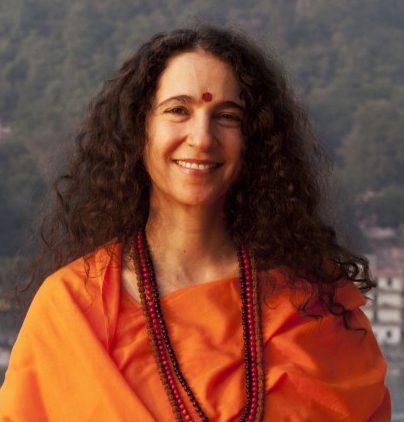Pratyahara is a practice in which we withdraw the senses from objects in the outer world and turn them to the inner world. It’s not a dulling or negation of the senses; rather, it is a shifting of the direction of the antennae. Picture an old TV set with the rabbit-ear antennae. Imagine taking those antennae, which are pointed outwards, connecting with the TV waves in the outer world, and turning them to point inside the TV to connect only with the internal waves! That is what pratyahara is. It shifts our sensory antennae from the outside to the inside. It is an important limb among the eight limbs of yoga outlined by the sage Patanjali.
If God has given us the ability to use our five senses to experience the world, why would we have a valued practice of withdrawing them? I frequently emphasise that God doesn’t make mistakes. God gives us what we have for a purpose.
However, just because God has given us a gift doesn’t mean that we were meant to use that gift indiscriminately. Yes, we have tongues that taste, but that doesn’t mean we should eat everything, all day. We have fingers that touch, but it doesn’t mean that we should touch everything. Anybody who’s ever touched a hot burner, a cactus or a sharp edge knows clearly that this is not what God intended when we were given the ability to touch.
Just because God has given us something doesn’t mean we are supposed to use it with reckless abandon however we want. Everything we’ve been given is for a purpose, and the sense organs have been given to us so that we can know the outer world.
I need my organ of touch so that I can navigate the external world, so that when I put my hand on a hot stove, I’m able to remove it immediately. If I didn’t have sensory neurons that worked immediately in my spinal cord, connecting to the motor neurons that are going to bring my hand off the stove, I would leave it there, I would burn myself and, after a few seconds, I would give myself such a burn that it would become infected, it could get septic and I could die. Say, I’m driving my car and I hear a loud horn. My sense of hearing puts me on alert and helps me notice the car that ran the red light so that I react in time and don’t get hit. The organs of sensation are very important to help us interact safely and effectively with the world around us. They also give us the gift of being able to appreciate and love the beauty of creation—the sunset, the smell of jasmine, the sound of the rain on a lake. Our senses are a gift to experience the outer world.
Yet, as we are reminded over and over again, the real world is the inner world. This is where pratyahara comes in. It is necessary if we want to achieve meditation (dhyan), enlightenment (samadhi), divine yogic union, bliss and ecstasy. But before I can meditate, I have to take this mind that is in a thousand places and put it in one place—focused on a mantra, a candle flame, an image, my breath. And even before I can do that, I have to stop my organs of sensation and perception from being rooted in the outer world.
That’s why it’s very difficult to meditate when you’re in the middle of a football game, a supermarket or while driving your car. You’ve got to keep your eyes open! Anything you’re doing that requires you to be focused outward is a very difficult situation to meditate in, because in that moment, your perception is rooted in the sensory organs that face outward. This is why when we sit down to meditate, the first thing we do is choose a place that’s quiet and close our eyes. Because you have to be able to draw your senses inward to focus them on only one thing you’re going to focus on, whether it’s a mantra, a candle, an image or your breath. And from that single-pointed focus, you will be able to merge into a state of meditation, and from that you will be able to, with grace, experience samadhi. But the pratyahara is the crucial first step.
For the outer world, we need our sensory organs. We tell God, thank you for the fact that we are able to hear, feel, see, taste and touch. But also, now, thank you for this inner world where I can see you and hear you. We need both.
The above extract has been republished with permission from ‘Come Home to Yourself-Wisdom for Life from Parmarth Niketan Ashram’ (Penguin Random House) by Sadhvi Bhagawati Saraswati.


